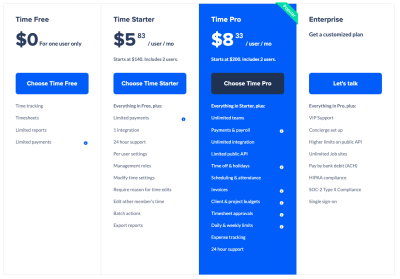Getty Images is a leading visual media company that provides a vast library of high-quality images, videos, and music. Understanding their licensing options is crucial for anyone looking to use lifestyle content for commercial or personal purposes. This guide will explore what Getty Images licensing entails and the different types of licenses offered by the platform.
What is Getty Images Licensing

Getty Images licensing refers to the permissions granted to users for utilizing its extensive collection of visual content. When someone wants to use an image or video from Getty Images, they must obtain the appropriate license, which outlines how the content can be legally used. This system is designed to protect the rights of creators while providing customers with flexibility in using compelling visual narratives for various projects. It’s essential to check the licensing terms and restrictions for each piece of content, as they can vary significantly based on intended use, such as commercial advertising versus editorial purposes.
Types of Licenses Offered by Getty Images

Getty Images offers several types of licenses to cater to different needs:
- Royalty-Free License: Allows users to pay a one-time fee for the image, after which they can use it multiple times without additional payments.
- Rights-Managed License: This license is more restrictive, often based on specific usage scenarios, such as duration, location, and medium.
- Editorial License: Designed for newsworthy or non-commercial use, this license allows the use of images for purposes like journalism or blogging but not for advertising.
- Extended License: Provides broader usage rights, including print runs, merchandise, or broadcast, often for a higher fee.
Understanding these licenses helps creators and marketers choose the right content for their projects while respecting copyright laws and ensuring their work remains legally protected.
Understanding Editorial vs. Commercial Use

When diving into the world of licensing for lifestyle content, it’s crucial to grasp the difference between editorial and commercial use. Each category has its own set of rules and purposes, guiding how you can utilize images from Getty Images.
Editorial Use refers to images that are used to inform, educate, or entertain through newsworthy or non-commercial content. This includes:
- Articles in newspapers and magazines
- News broadcasts
- Blogs and podcasts that discuss current events
- Social media posts that address social or political issues
In contrast, Commercial Use involves images used in marketing or selling products and services. This can encompass:
- Advertisements
- Promotional materials
- Website content aiming to drive sales
- Social media campaigns designed to generate leads
It’s essential to note that using editorial images for commercial purposes, or vice versa, can result in legal complications. Always check the licensing agreements carefully, as they outline restrictions on usage. If you’re unsure which category your project falls into, it’s wise to consult with a legal expert or directly with Getty Images to clarify your options.
Benefits of Using Getty Images for Lifestyle Content

Using Getty Images for your lifestyle content can provide a multitude of advantages that can elevate your projects. Here are some compelling reasons to consider:
| Benefit | Description |
|---|---|
| High-Quality Visuals | The collection boasts stunning, professionally shot images that can instantly enhance your content’s appeal. |
| Diverse Selection | With millions of images available, there’s a vast variety to match any theme, mood, or context you desire. |
| Easy Licensing Process | Getty Images provides a straightforward licensing framework, making it easier for you to know what you can and can’t do with each image. |
| Brand Trust | Using images from a respected source builds credibility and trust with your audience, making them more likely to engage with your content. |
| Timely Updates | Getty frequently updates their library, so you’ll have access to the latest trends and themes in lifestyle content. |
By leveraging Getty Images, you not only gain access to professional visuals but also ensure that your content resonates with your audience through quality and relevance. Whether you’re a marketer, blogger, or content creator, using Getty Images can undoubtedly take your lifestyle content to the next level!
Common Mistakes to Avoid When Licensing Images
Licensing images from Getty can be a straightforward process, but there are several common pitfalls that many creators encounter. Here are some mistakes to watch out for:
- Ignoring Usage Rights: Always double-check the specific usage rights associated with the image you’re purchasing. Using an image beyond its designated scope can result in fines or cease-and-desist orders.
- Neglecting to Read the License Agreement: Every image comes with its own licensing agreement. Skipping this crucial step can lead to misunderstandings about what you can and cannot do with the image.
- Assuming All Images Are Editable: Many people mistakenly believe that licensing an image allows them to edit it freely. Some licenses explicitly prohibit alterations. Always verify before making any changes.
- Failing to Keep Invoices and Agreements: Maintaining proper documentation can protect you if questions arise about your use of an image. Keep a file of all your transactions.
- Using Images in Unsupported Media: Different licenses cover various media types (digital, print, etc.). Make sure you select an appropriate license for your intended use.
By staying aware of these common mistakes, you can navigate the licensing process more smoothly and make the most of Getty Images‘ extensive collection.
Best Practices for Crediting Getty Images
Crediting images correctly is not just courteous; it’s often required by licensing agreements. Here are some best practices to ensure you give proper credit to Getty Images:
- Follow Getty’s Guidelines: Getty provides specific instructions on how to credit their images. Always refer to their official guidelines to ensure compliance.
- Include the Artist’s Name: Whenever possible, mention the photographer or creator’s name as part of the credit. It adds a personal touch and recognizes their talent.
- Use Proper Format: A common format for crediting is: “Photo by [Photographer’s Name]/Getty Images.” This is concise and clearly attributes the work.
- Link Back to the Source: If you’re using images online, consider linking back to the image page on Getty. It not only gives credit but also helps your audience discover more work.
- Be Consistent: Whether you’re using images in a blog, social media, or a printed piece, maintain a consistent style for credits across all platforms.
By adhering to these best practices, you ensure respectful usage of visual content while also enhancing the credibility of your own work. Remember, proper credit fosters a supportive creative community!
Cost Considerations and Budgeting for Licensing
When it comes to using images from Getty Images, understanding the cost structure is essential for effective budgeting. The fees can vary significantly based on a few key factors, including:
- Type of License: Getty offers different types of licenses, such as royalty-free and rights-managed. Royalty-free images typically cost less, while rights-managed images can be more expensive due to usage restrictions and exclusivity.
- Image Size: Larger images or those intended for print use tend to be pricier. If you’re using images for online content, you might not need the highest resolution, allowing for more cost-effective choices.
- Duration and Scope: Consider how long you’ll need the images and where you’ll use them. Licenses for longer durations or wider distributions (like global advertising campaigns) often come with higher costs.
- Subscription Plans: If you plan to use images regularly, explore Getty’s subscription models, which may offer discounts and flexible usage options compared to purchasing images individually.
Here’s a quick budgeting checklist:
- Identify your needs: Determine how many images you’ll need and the types of licenses required.
- Set a budget: Establish a maximum spending limit for image licensing to avoid unexpected costs.
- Evaluate usage: Consider the potential exposure and lifespan of your content to justify the investment.
- Plan for alternatives: Have a backup plan for stock images, such as subscriptions to other stock photo websites or using Creative Commons images where applicable.
By carefully considering these cost factors, you can ensure effective budgeting while maximizing the quality and impact of your lifestyle content with Getty Images.
Conclusion and Final Thoughts on Using Getty Images
In conclusion, using Getty Images for your lifestyle content can significantly enhance the visual appeal and engagement of your projects. The vast library offers a wealth of high-quality images that can resonate with your target audience. However, with great power comes responsibility — and considerations!
As we’ve discussed:
- It’s crucial to understand the licensing types and their implications for your particular use case.
- Be mindful of costs and plan your budget accordingly to ensure that image licensing fits within your financial constraints.
- Always adhere to the licensing agreements to avoid legal issues down the line.
Ultimately, the goal is to choose images that not only capture attention but also align with your branding and messaging. By leveraging Getty Images effectively, you can enrich your content, create compelling narratives, and ultimately drive greater engagement.
As you embark on your visual storytelling journey, keep these insights in mind, and you’ll be well-equipped to make informed decisions about image licensing. Happy creating!


